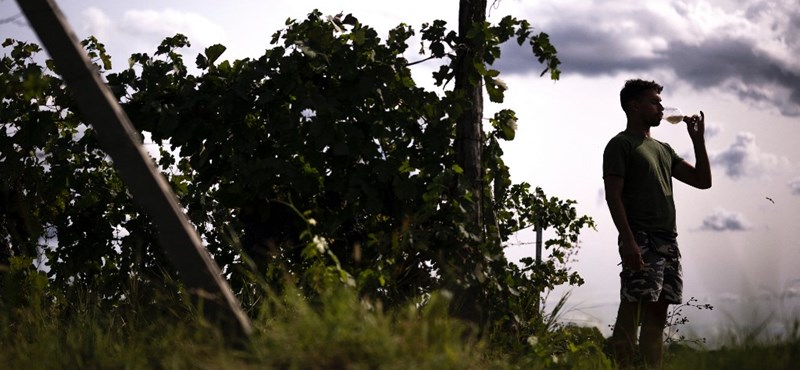[{“available”:true,”c_guid”:”05c8fd35-502c-4914-8e41-cda36881730d”,”c_author”:”HVG360″,”category”:”360″,”description”:”Az autokraták szövetsége, bár közös ellenségük a Nyugat, nem működik igazán. Az önkényurakat Pekingtől Moszkván át Ankaráig a paranoia és az üldözési mánia vezérli. Betegesen csakis a saját érdekeiket nézik, ezért soha nem megbízható partnerek.”,”shortLead”:”Az autokraták szövetsége, bár közös ellenségük a Nyugat, nem működik igazán. Az önkényurakat Pekingtől Moszkván át…”,”id”:”20230908_die_presse_g20_india_kina_oroszorszag_torokorszag_autokratak_amerika_egyesult_allamok_nyugat”,”image”:”https://api.hvg.hu/Img/ffdb5e3a-e632-4abc-b367-3d9b3bb5573b/05c8fd35-502c-4914-8e41-cda36881730d.jpg”,”index”:0,”item”:”c39b610b-e22b-4a28-b0d7-42b539c8b5c5″,”keywords”:null,”link”:”/360/20230908_die_presse_g20_india_kina_oroszorszag_torokorszag_autokratak_amerika_egyesult_allamok_nyugat”,”timestamp”:”2023. szeptember. 08. 15:30″,”title”:”Die Presse-kommentár: Kínának nincsenek szövetségesei, csak vazallusai”,”trackingCode”:”RELATED”,”c_isbrandchannel”:false,”c_isbrandcontent”:false,”c_isbrandstory”:false,”c_isbrandcontentorbrandstory”:false,”c_isbranded”:false,”c_ishvg360article”:true,”c_partnername”:null,”c_partnerlogo”:”00000000-0000-0000-0000-000000000000″,”c_partnertag”:null},{“available”:true,”c_guid”:”7a7a70fa-f2c7-4271-a32a-021fe43bc205″,”c_author”:”hvg.hu”,”category”:”itthon”,”description”:”Hogyan tudja meggyőzni a kisembereket a Fidesz, hogy értük dolgozik, miközben gazdasági, oktatási és szellemi elitet épít? Miért prédikálnak nemzetet és családot, amikor a lehető legindividualistább berendezkedést alakítják ki? Miként tetszeleg a párt a szegényeknek, amikor csak a gazdagok kapnak levegőt az országban? Közéleti podcastunkban megpróbáltuk feloldani a NER belső ellentéteit és megérteni, miért töretlen Orbán Viktor sikere az alsó rétegekben, amikor csak a felsők járnak jól az ő politikájával.”,”shortLead”:”Hogyan tudja meggyőzni a kisembereket a Fidesz, hogy értük dolgozik, miközben gazdasági, oktatási és szellemi elitet…”,”id”:”20230908_Fulke_NER_elit_gazdasag_oktatas_ideologia_politika_Fidesz”,”image”:”https://api.hvg.hu/Img/ffdb5e3a-e632-4abc-b367-3d9b3bb5573b/7a7a70fa-f2c7-4271-a32a-021fe43bc205.jpg”,”index”:0,”item”:”e79c8abb-d548-4c55-a13a-74e77465f1a3″,”keywords”:null,”link”:”/itthon/20230908_Fulke_NER_elit_gazdasag_oktatas_ideologia_politika_Fidesz”,”timestamp”:”2023. szeptember. 08. 15:00″,”title”:”Fülke: A NER-elit épül, az ország leépül, de még a vesztesek is tapsolnak”,”trackingCode”:”RELATED”,”c_isbrandchannel”:false,”c_isbrandcontent”:false,”c_isbrandstory”:false,”c_isbrandcontentorbrandstory”:false,”c_isbranded”:false,”c_ishvg360article”:false,”c_partnername”:null,”c_partnerlogo”:”00000000-0000-0000-0000-000000000000″,”c_partnertag”:null},{“available”:true,”c_guid”:”fd0356df-f1b0-4c7b-9a58-bd556d8ba7fa”,”c_author”:”MTI”,”category”:”tudomany”,”description”:”Húsz éve, 2003. szeptember 9-én halt meg Teller Ede, a hidrogénbomba atyjaként számon tartott atomfizikus, a 20. század egyik legnagyobb és legellentmondásosabb tudósa.”,”shortLead”:”Húsz éve, 2003. szeptember 9-én halt meg Teller Ede, a hidrogénbomba atyjaként számon tartott atomfizikus, a 20. század…”,”id”:”20230909_teller_ede_portre_hidrogenbomba_atyja_oppenheimer”,”image”:”https://api.hvg.hu/Img/ffdb5e3a-e632-4abc-b367-3d9b3bb5573b/fd0356df-f1b0-4c7b-9a58-bd556d8ba7fa.jpg”,”index”:0,”item”:”615398ac-a0fe-4354-a57e-12e9fde53ffa”,”keywords”:null,”link”:”/tudomany/20230909_teller_ede_portre_hidrogenbomba_atyja_oppenheimer”,”timestamp”:”2023. szeptember. 09. 06:03″,”title”:”20 éve halt meg a hidrogénbomba magyar atyja, aki nélkül nagyon máshogy alakulhatott volna a történelem: Teller Ede”,”trackingCode”:”RELATED”,”c_isbrandchannel”:false,”c_isbrandcontent”:false,”c_isbrandstory”:false,”c_isbrandcontentorbrandstory”:false,”c_isbranded”:false,”c_ishvg360article”:false,”c_partnername”:null,”c_partnerlogo”:”00000000-0000-0000-0000-000000000000″,”c_partnertag”:null},{“available”:true,”c_guid”:”c4535550-8fe5-4a18-96af-464c77370398″,”c_author”:”hvg.hu”,”category”:”elet”,”description”:”Ezt a műsorvezető a műsorában ismerte el, akkor, amikor épp az így kirakott színész volt a vendége.”,”shortLead”:”Ezt a műsorvezető a műsorában ismerte el, akkor, amikor épp az így kirakott színész volt a vendége.”,”id”:”20230908_Meguzentek_Gesztinek_hogy_Nagy_Ervin_szereplesevel_nem_keszulhet_el_a_film”,”image”:”https://api.hvg.hu/Img/ffdb5e3a-e632-4abc-b367-3d9b3bb5573b/c4535550-8fe5-4a18-96af-464c77370398.jpg”,”index”:0,”item”:”0eddc2fc-bd5d-4437-97df-937886445470″,”keywords”:null,”link”:”/elet/20230908_Meguzentek_Gesztinek_hogy_Nagy_Ervin_szereplesevel_nem_keszulhet_el_a_film”,”timestamp”:”2023. szeptember. 08. 10:50″,”title”:”Megüzenték Gesztinek, hogy Nagy Ervin szereplésével nem készülhet el a film”,”trackingCode”:”RELATED”,”c_isbrandchannel”:false,”c_isbrandcontent”:false,”c_isbrandstory”:false,”c_isbrandcontentorbrandstory”:false,”c_isbranded”:false,”c_ishvg360article”:false,”c_partnername”:null,”c_partnerlogo”:”00000000-0000-0000-0000-000000000000″,”c_partnertag”:null},{“available”:true,”c_guid”:”1ead7d95-373f-4b8d-b4a2-510a8cd036df”,”c_author”:”hvg.hu”,”category”:”elet”,”description”:”Maya Hawke filmbeli partnereiről azonban ez nem volt elmondható. “,”shortLead”:”Maya Hawke filmbeli partnereiről azonban ez nem volt elmondható. “,”id”:”20230908_Ethan_Hawke_Maya_Hawke_szexjelenet_forgatas”,”image”:”https://api.hvg.hu/Img/ffdb5e3a-e632-4abc-b367-3d9b3bb5573b/1ead7d95-373f-4b8d-b4a2-510a8cd036df.jpg”,”index”:0,”item”:”2da0e2a7-5589-4adf-b343-528ba8155567″,”keywords”:null,”link”:”/elet/20230908_Ethan_Hawke_Maya_Hawke_szexjelenet_forgatas”,”timestamp”:”2023. szeptember. 08. 14:59″,”title”:”Ethan Hawke szexjelenetben rendezte a lányát, de szerintük ebben semmi furcsa nem volt”,”trackingCode”:”RELATED”,”c_isbrandchannel”:false,”c_isbrandcontent”:false,”c_isbrandstory”:false,”c_isbrandcontentorbrandstory”:false,”c_isbranded”:false,”c_ishvg360article”:false,”c_partnername”:null,”c_partnerlogo”:”00000000-0000-0000-0000-000000000000″,”c_partnertag”:null},{“available”:true,”c_guid”:”fe232387-9d19-4a54-942e-29dc095fdf7a”,”c_author”:”OTP Bank Nyrt.”,”category”:”brandcontent”,”description”:”Lassan tényleg mind elfelejtjük, volt-e valaha szaga a pénznek. Budapesti járókelőket kérdeztünk: milyen funkciója maradt a mindennapjaikban a készpénznek? Milyen helyzetekben tartja magát a régi szokás? Mit látnak, melyek azok a helyek, szituációk, ahová még nem gyűrűzött be a kártyás fizetési lehetőség? Illetve: hogyan gondolkodnak a kártya és a készpénz biztonsági aspektusairól? Videó.”,”shortLead”:”Lassan tényleg mind elfelejtjük, volt-e valaha szaga a pénznek. Budapesti járókelőket kérdeztünk: milyen funkciója…”,”id”:”20230801_otp_kartyas_vasarlas”,”image”:”https://api.hvg.hu/Img/ffdb5e3a-e632-4abc-b367-3d9b3bb5573b/fe232387-9d19-4a54-942e-29dc095fdf7a.jpg”,”index”:0,”item”:”9bc9a6f5-3236-4f9a-9b2e-f654871f9e4e”,”keywords”:null,”link”:”/brandcontent/20230801_otp_kartyas_vasarlas”,”timestamp”:”2023. szeptember. 09. 11:30″,”title”:”Budapesti járókelőket kérdeztünk: milyen funkciója maradt a mindennapjaikban a készpénznek?”,”trackingCode”:”RELATED”,”c_isbrandchannel”:false,”c_isbrandcontent”:true,”c_isbrandstory”:false,”c_isbrandcontentorbrandstory”:true,”c_isbranded”:true,”c_ishvg360article”:false,”c_partnername”:null,”c_partnerlogo”:”00000000-0000-0000-0000-000000000000″,”c_partnertag”:null},{“available”:true,”c_guid”:”e9210b9f-bb55-4de0-9505-856fbfc4875e”,”c_author”:”V.É.”,”category”:”elet”,”description”:”Miért teszünk úgy, mintha a pihenést szégyellni kellene? Itt lenne az ideje, hogy Orbán Viktor is felvállalja: több Adria, több boldogság. “,”shortLead”:”Miért teszünk úgy, mintha a pihenést szégyellni kellene? Itt lenne az ideje, hogy Orbán Viktor is felvállalja: több…”,”id”:”20230908_Orban_Viktor_Horvatorszag_tengerparti_nyaralas_szabadsag_video”,”image”:”https://api.hvg.hu/Img/ffdb5e3a-e632-4abc-b367-3d9b3bb5573b/e9210b9f-bb55-4de0-9505-856fbfc4875e.jpg”,”index”:0,”item”:”bb43fc14-9553-46bf-932c-828969f49269″,”keywords”:null,”link”:”/elet/20230908_Orban_Viktor_Horvatorszag_tengerparti_nyaralas_szabadsag_video”,”timestamp”:”2023. szeptember. 08. 11:16″,”title”:”Sokkal jobb, ha Orbán Viktor nyaral, mint ha nem”,”trackingCode”:”RELATED”,”c_isbrandchannel”:false,”c_isbrandcontent”:false,”c_isbrandstory”:false,”c_isbrandcontentorbrandstory”:false,”c_isbranded”:false,”c_ishvg360article”:false,”c_partnername”:null,”c_partnerlogo”:”00000000-0000-0000-0000-000000000000″,”c_partnertag”:null},{“available”:true,”c_guid”:”d6d9759b-2af5-4b10-b63c-1c2672e9c127″,”c_author”:”MTI”,”category”:”cegauto”,”description”:”A vidéki autósok mintegy 47,9 ezer forintos átlagdíja csaknem 28 ezer forinttal maradt el a budapestiek közel 75,7 ezer forintos átlagdíjától idén június végén. “,”shortLead”:”A vidéki autósok mintegy 47,9 ezer forintos átlagdíja csaknem 28 ezer forinttal maradt el a budapestiek közel 75,7 ezer…”,”id”:”20230908_MNB_kgfbkarraforditas_novekedes”,”image”:”https://api.hvg.hu/Img/ffdb5e3a-e632-4abc-b367-3d9b3bb5573b/d6d9759b-2af5-4b10-b63c-1c2672e9c127.jpg”,”index”:0,”item”:”5e2d9b91-7aff-48e5-84f9-70b0b2983fbb”,”keywords”:null,”link”:”/cegauto/20230908_MNB_kgfbkarraforditas_novekedes”,”timestamp”:”2023. szeptember. 08. 13:29″,”title”:”Közel 30 ezer forinttal drágább a kgfb Budapesten, mint vidéken”,”trackingCode”:”RELATED”,”c_isbrandchannel”:false,”c_isbrandcontent”:false,”c_isbrandstory”:false,”c_isbrandcontentorbrandstory”:false,”c_isbranded”:false,”c_ishvg360article”:false,”c_partnername”:null,”c_partnerlogo”:”00000000-0000-0000-0000-000000000000″,”c_partnertag”:null}]


Depending on your membership level, we offer, among others:
- We send you an exclusive weekly digest of interesting things in the world;
- You can get an insight into HVG’s work, and you can meet our authors;
- You can participate in previews of the latest films, in various events;
- You can purchase HVG books and publications at a discount;
- You can read hvg360 digital news magazine.
We recommend it from the first page
















































